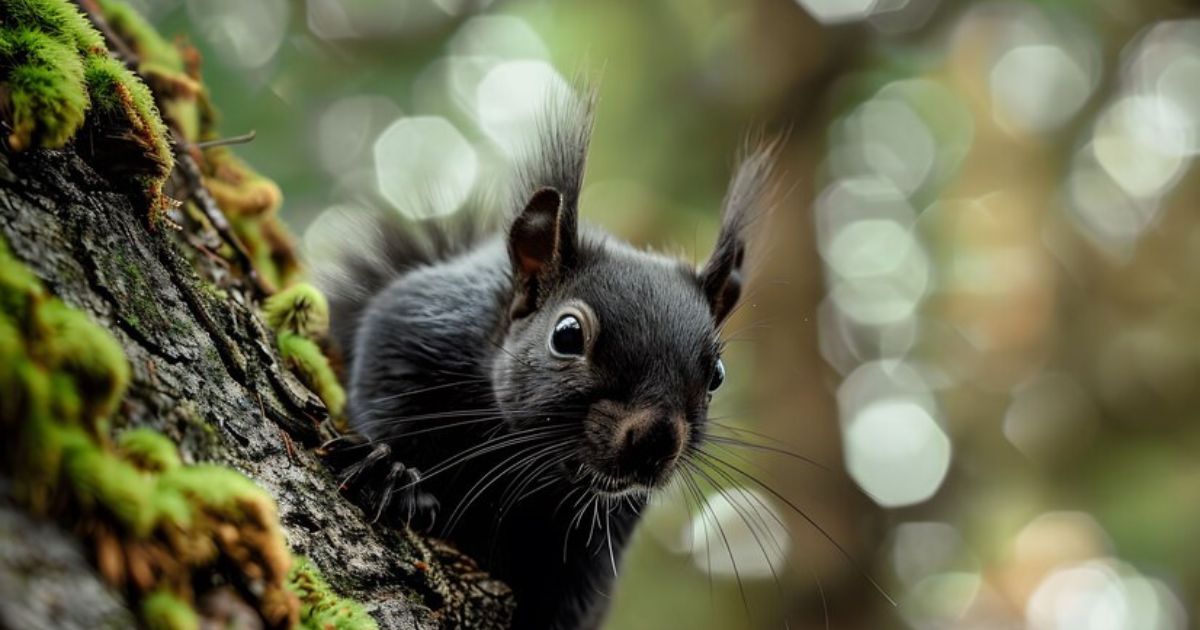Uncategorized
Black Squirrel: Unique Traits, Habitat, and Fascinating Facts

Uncategorized
Ovppyo: The Future-Driven Concept Shaping Innovation

Have you ever come across the term Ovppyo and wondered what it really means? In a world where technology is evolving at lightning speed, concepts like Ovp’pyo are starting to grab attention. While it may sound new or even unusual, it represents a powerful shift in how we view progress, adaptability, and transformation in modern life. Think of Ovppyo as a fresh idea that acts like a seed planted in the fertile ground of innovation—it grows, adapts, and reshapes industries.
Understanding the Concept of Ovppyo
At its core, Ovppyo is more than just a word—it’s a symbol of change and growth. In simple terms, Ovppyo can be described as a framework or mindset that blends creativity, adaptability, and technology to solve problems. It pushes us to look beyond traditional boundaries and rethink how we approach challenges. Just like the internet changed communication, Ovp’pyo is here to redefine the future of innovation.
Origin and Meaning of Ovppyo
The term Ovppyo may sound futuristic because it embodies the idea of next-generation progress. It doesn’t tie itself to a specific industry but instead represents a broader perspective—embracing evolution, performance, productivity, and youth-driven optimism. Whether it is in business, education, or personal growth, Ovp’pyo carries the meaning of constant improvement and forward-thinking.
Why Ovppyo Matters in Today’s World
Why should we care about Ovppyo? The answer lies in how rapidly the world is changing. From artificial intelligence to sustainable practices, societies are craving fresh approaches. Ovp’pyo matters because it introduces a mindset of resilience and adaptation. Imagine being on a fast-moving train—without Ovp’pyo, you risk falling behind; with it, you’re not just keeping up but leading the journey.
Core Features of Ovppyo
The philosophy of Ovppyo is built on several distinct features:
- Adaptability: The ability to adjust to new environments.
- Innovation: A constant push for creative solutions.
- Sustainability: Thinking about long-term impacts.
- Scalability: Designed to grow with opportunities.
These features make Ovppyo stand out as a versatile concept applicable in nearly every domain of life.
The Role of Ovppyo in Digital Transformation
Digital transformation is no longer a choice; it’s a necessity. Ovppyo plays a significant role by offering a framework for businesses and individuals to embrace new technologies, improve processes, and stay competitive. For example, companies integrating Ovp’pyo-inspired strategies can automate workflows, enhance customer experience, and prepare for the unpredictable future of tech.
How Businesses Can Leverage Ovppyo
Businesses thrive on innovation, and Ovppyo offers exactly that. By adopting Ovp’pyo, companies can:
- Enhance productivity with smart solutions.
- Develop customer-focused products.
- Reduce operational costs through efficiency.
- Improve adaptability in volatile markets.
In short, Ovppyo provides a competitive edge that transforms challenges into opportunities.
Benefits of Using Ovp’pyo
The list of benefits Ovppyo brings is long, but some highlights include:
- Faster decision-making through data-driven strategies.
- Improved collaboration across teams and industries.
- Sustainable growth that prioritizes future generations.
- Flexibility to pivot when challenges arise.
These advantages prove that Ovppyo is not just an idea—it’s a practical toolkit for progress.
Challenges Related to Ovppyo
Like every concept, Ovppyo is not without its challenges. Some barriers include resistance to change, lack of awareness, and limited resources for implementation. Overcoming these hurdles requires education, leadership, and a culture that embraces innovation rather than fears it.
Ovppyo and the Future of Technology
Technology is advancing faster than ever, and Ovp’pyo is deeply tied to this growth. From AI and blockchain to virtual reality and green tech, Ovp’pyo encourages us to integrate new tools responsibly. It acts as a guiding principle for how we should approach technology—balancing speed with ethics.
Real-World Applications of Ovppyo
Ovppyo is not just theoretical. Its applications span across industries:
- Healthcare: Smarter diagnostics and patient care.
- Education: Personalized learning powered by AI.
- Business: Agile models that respond to market shifts.
- Sustainability: Eco-friendly practices and green energy.
These examples show that Ovppyo has the power to reshape society at multiple levels.
Comparing Ovppyo with Other Emerging Trends
Unlike trends that fade quickly, Ovppyo is designed for longevity and adaptability. While concepts like “metaverse” or “crypto” may be tied to specific technologies, Ovp’pyo is broader and more flexible, making it relevant across decades and industries.
The Impact of Ovppyo on Society
On a social level, Ovppyo promotes collaboration, inclusivity, and empowerment. It encourages young minds to think differently, businesses to act responsibly, and communities to work together toward sustainable growth. Its influence lies not only in technology but also in shaping mindsets and values.
Best Practices for Adopting Ovp’pyo
For individuals and businesses ready to embrace Ovppyo, here are some tips:
- Stay curious and open-minded.
- Invest in continuous learning.
- Focus on long-term goals instead of short-term gains.
- Build collaborative networks.
- Embrace digital tools without losing the human touch.
These practices make adopting Ovppyo smooth and effective.
Conclusion
Ovppyo is more than just a buzzword—it’s a philosophy for the future. It challenges us to think differently, act responsibly, and build sustainably. Whether you’re an entrepreneur, student, or professional, Ovp’pyo provides a guiding light to navigate the complexities of the modern world. Embracing it today means securing a brighter tomorrow.
FAQs
- What does Ovppyo mean?
Ovppyo represents a concept of innovation, adaptability, and progress designed to reshape industries and societies. - How is Ovp’pyo different from other trends?
Unlike short-lived trends, Ovp’pyo is broad, flexible, and applicable across multiple domains, ensuring long-term relevance. - Can small businesses adopt Ovp’pyo?
Yes! In fact, small businesses benefit greatly by using Ovp’pyo to remain agile, creative, and customer-focused. - Is Ovppyo tied only to technology?
No, while it aligns with digital transformation, Ovp’pyo also applies to education, sustainability, leadership, and personal growth. - How can individuals use Ovppyo in daily life?
By staying adaptable, embracing learning, and thinking long-term, anyone can practice Ovppyo in their personal and professional life.
Uncategorized
Quikconsole com: The Complete Guide You Need to Know

In today’s digital-first world, platforms like Quikconsole com are gaining attention for providing quick, reliable, and centralized solutions for online users. Whether it is about digital tools, user interaction, or resource accessibility, the platform offers something unique that stands out in a crowded online space. Many people come across it when searching for tools that simplify tasks, streamline services, or provide better user convenience. This guide will break down everything about Quikconsole com, how it works, what it offers, and why it is becoming popular.
What is Quikconsole com
Quikconsole com is an online platform designed to deliver centralized digital services and tools that enhance productivity and online experiences. It acts as a console-like hub where users can access features in one place instead of relying on multiple different applications or websites. This all-in-one nature is what makes it appealing to users who want efficiency without complication.
The Purpose of Quikconsole com
The primary purpose of Quikconsole com is to offer speed and simplicity. The name itself reflects quick access and console-based functionality. Unlike scattered platforms, this site brings multiple functions together, saving time and effort for users. For businesses, it can also serve as a reliable digital point to manage or streamline certain processes.
Key Features of Quikconsole com
Quikconsole com is loaded with features that make it valuable for individuals and organizations. Its features include centralized management, user-friendly design, fast loading, responsive navigation, and compatibility with multiple devices. The seamless integration of these features ensures that users experience smooth digital operations.
User-Friendly Interface
One of the most significant aspects of Quikconsole com is its intuitive interface. You don’t need to be tech-savvy to navigate it. With clear menus, quick commands, and minimal clutter, users can access the tools they need without unnecessary distractions. The design is clean and optimized for both beginners and advanced users.
Speed and Accessibility
Speed is the foundation of Quikconsole com. The platform is designed to ensure that tasks are performed quickly without lag. Its accessibility across various devices like desktops, tablets, and smartphones means users can stay connected and productive wherever they are. This cross-platform compatibility adds extra value to the service.
Security and Reliability
In today’s online environment, security is a top priority, and Quikconsole com does not disappoint. It provides secure connections, protecting user data from potential breaches. Its reliable performance ensures that users can trust the platform for consistent use, whether for business tasks or personal activities.
Benefits of Using Quikconsole com
Using Quikconsole com brings numerous benefits. It helps in saving time by reducing the need to switch between different platforms. Its fast operations enhance productivity. The user-friendly design minimizes the learning curve, while its security ensures peace of mind. Overall, it balances convenience, speed, and safety.
Who Can Use Quikconsole com
Quikconsole com is designed for a wide range of users. Businesses can use it to simplify digital management. Freelancers and professionals can rely on it for streamlined work processes. Students and general users can utilize it for easy access to tools. Its versatility makes it suitable for nearly everyone.
How Quikconsole com Enhances Productivity
Productivity is boosted by Quikconsole com through its centralized approach. Instead of wasting time toggling between apps or searching for tools, users find everything in one place. This centralization cuts down wasted time, allowing more focus on the actual task, thereby improving efficiency.
Why Quik’console com Stands Out
What makes Quikconsole com stand out is its combination of speed, simplicity, and versatility. Many platforms focus on one aspect, but Quikconsole com manages to bring multiple benefits under one roof. This balance makes it more appealing than competitors offering limited services.
Potential Drawbacks of Quik’console com
Like any digital platform, Quikconsole com has its limitations. Some users may feel that while it provides a variety of tools, certain advanced features are missing compared to specialized platforms. Additionally, being an online service, it heavily depends on internet connectivity, which can be a drawback in areas with poor networks.
Tips for Getting the Best Out of Quik’console com
To maximize Quikconsole com, users should familiarize themselves with its features and settings. Exploring its console thoroughly allows you to unlock hidden functionalities. Using it across devices ensures seamless integration in daily routines. For businesses, training staff on how to use it effectively can further enhance its value.
Future Potential of Quikconsole com
The future looks bright for Quik’console com, as demand for centralized digital solutions continues to rise. With more users seeking efficiency and productivity, platforms like Quikconsole com are expected to expand with advanced features, better integration, and more secure environments. Its potential to grow into a leading digital hub is high.
Alternatives to Quikconsole com
While Quikconsole com offers many benefits, alternatives exist for users with specific needs. Platforms like Trello, Slack, or Notion provide specialized solutions. However, the main difference is that these alternatives focus on niche areas, while Quik’console com focuses on being an all-in-one hub, which can be more convenient for general use.
Conclusion
Quikconsole com is more than just a website; it is a hub for digital efficiency. Its speed, user-friendly design, and centralized features make it a valuable platform for individuals, professionals, and businesses. While it has minor drawbacks, its benefits far outweigh them, making it a go-to solution for those seeking simplicity and productivity in the digital space. With its growing relevance, Quik’console com is well on its way to becoming a must-use platform for modern users.
FAQs
What is Quikconsole com used for?
Quik’console com is used as a centralized digital platform offering fast, secure, and user-friendly tools to enhance productivity and convenience.
Is Quikconsole com free to use?
Yes, many of its features are accessible without cost, though premium options may exist depending on the service model.
Can businesses benefit from Quik’console com?
Absolutely. Businesses can streamline operations and enhance productivity by using it as a central hub for digital management.
Is Quikconsole com safe?
Yes, it offers secure connections and reliable functionality, making it safe for users to trust with their digital tasks.
How does Quik’console com compare to other platforms?
Unlike specialized tools, Quikconsole com stands out by offering an all-in-one experience, making it versatile and user-friendly.
Uncategorized
G360vn: A Complete Guide to Features and Use

G360vn has become a known name among users who search for online tools, apps, or platforms that provide updates and services in one place. When people come across G360vn, they often want to understand what it offers, how it works, and whether it is safe to use. This guide gives you a clear overview of G360vn, its features, and how it can fit into your online routine.
What is G360vn?
G360vn is a website that provides access to a range of content and services. Depending on when you visit, it may focus on apps, entertainment, or digital tools. People usually search for G360vn to stay updated on new apps, news, or links that are trending online. Its interface is often simple, which makes it easy for users to find what they are looking for without much effort.
Main Features of G360vn
One of the reasons G360vn gets attention is the mix of features it offers. Users turn to the site for different needs, but some of the common features include app-related information, downloadable content, and quick updates. G360vn often highlights tools or services that are popular at the moment, which helps visitors stay informed about what is new online.
The structure of the site is usually straightforward. Navigation is designed for quick browsing so people can move between sections without confusion. While it may not be as polished as large platforms, the appeal lies in its direct and accessible design.
Why People Use G360vn
Users are often drawn to G360vn because it feels like a shortcut to current trends. Instead of searching across multiple platforms, people prefer a single hub that points them toward apps, updates, or resources. This is especially useful for users who want to explore new tools without spending hours on research.
Another reason for its popularity is accessibility. G360vn is designed to be lightweight and works across devices with standard browsers. This allows both mobile and desktop users to visit the site and browse its content without difficulty.
Is G360vn Safe to Use?
Safety is one of the biggest questions people ask about G360vn. Since it offers links and downloadable content, users should approach with caution. While the site itself often works as a hub, the content it points to can vary. To stay safe, visitors should avoid downloading unknown files, always check permissions before installing apps, and use updated antivirus protection on their devices.
If you treat G360vn as a source of information rather than a direct download hub, you reduce your risk. Stick to using it for updates or general browsing, and cross-check any apps or tools through official stores when possible.
Benefits of Using G360vn
G360vn is helpful in several ways:
-
Quick access to app and tool updates
-
A simple layout that supports easy navigation
-
Lightweight site design that works across devices
-
Timely updates on trending apps or online content
These benefits explain why many users return to the site. For those who want a place to browse without complex interfaces, G360vn provides a direct and practical experience.
Limitations of G360vn
Like any platform, G360vn has its limits. The content may not always be verified, and updates can vary in accuracy. Some users report that information changes often, making it hard to rely on for consistent details. Since the platform focuses more on being quick than in-depth, those who want detailed reviews or professional insights may need to look elsewhere.
Another limitation is trust. Because the site is not an official app store or verified news platform, users must remain alert. Treating the platform as a starting point rather than a final source is the safest approach.
How to Use G360vn Effectively
If you are new to G360vn, start by browsing its categories to see what content is most relevant to you. When you find apps or tools that interest you, make sure to confirm them on trusted platforms before downloading. Use the site mainly for exploration and updates, then rely on official sources for downloads and installations.
This way, you balance the convenience of G360vn with the security of verified platforms.
Conclusion
G360vn stands out as a lightweight and accessible hub for users who want quick updates on apps and online content. Its appeal comes from speed, simplicity, and access to trending topics. While it offers real benefits, it also requires users to stay alert and use caution with external links and downloads. If you use G360vn as a browsing and update tool, while cross-checking content through official sources, it can be a helpful addition to your digital routine.
-

 Sports10 months ago
Sports10 months agoThe Ultimate Guide to Ski and Snowboard Equipment, Ski Equipment Rental, and Snowboard Equipment Rental
-

 General1 year ago
General1 year agoStart-094: Unlocking Its Secrets and Understanding Its Power
-

 Entertainment1 year ago
Entertainment1 year agoHulu Error Code Rununk13: A Complete Guide
-

 General10 months ago
General10 months agoWindstream Email: Features, Setup, and Troubleshooting
-

 Entertainment11 months ago
Entertainment11 months agoSoaper.tv: A Comprehensive Guide to Your Streaming Companion
-

 Technology1 year ago
Technology1 year agoWhy SBCodez is the Go-To Resource for Aspiring Coders
-

 Games11 months ago
Games11 months agoPizza Edition Games: The Ultimate Guide to Fun and Flavor
-

 Uncategorized10 months ago
Uncategorized10 months agoOceanofPDF: Free eBooks Source or Copyright Violation?
